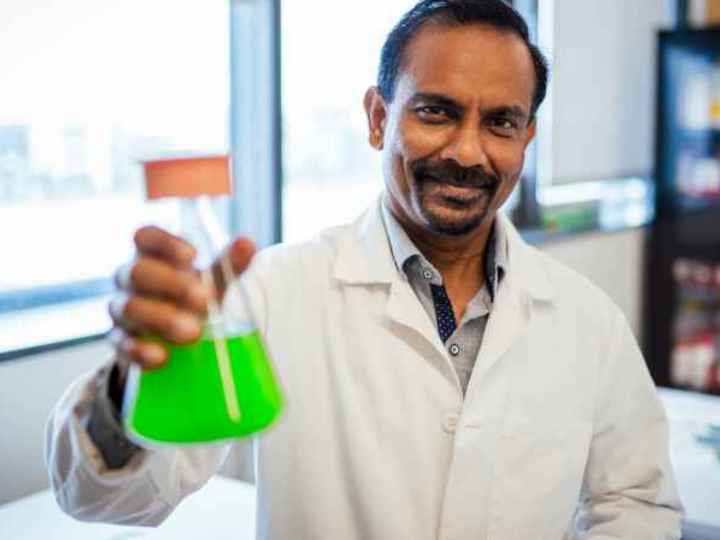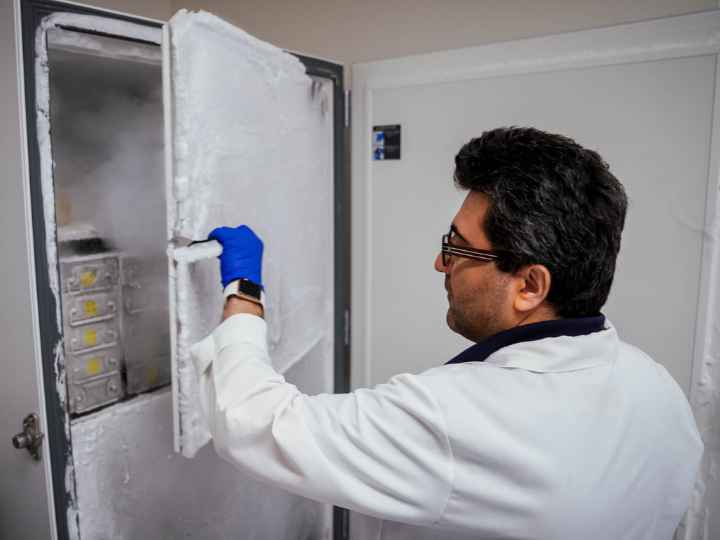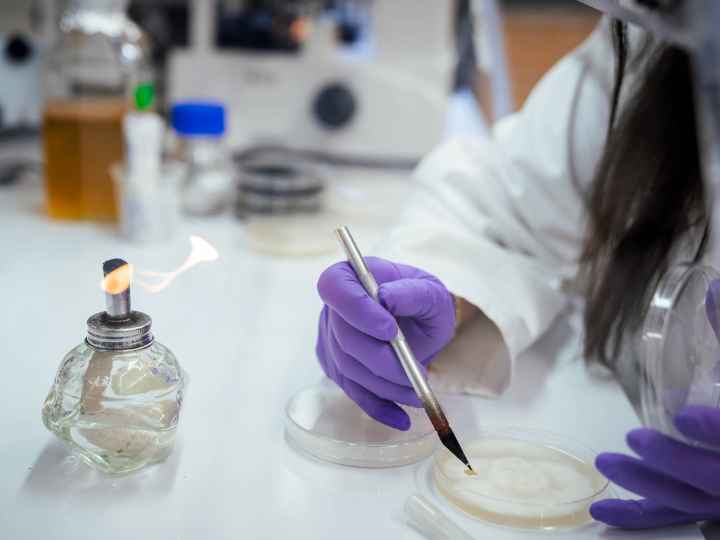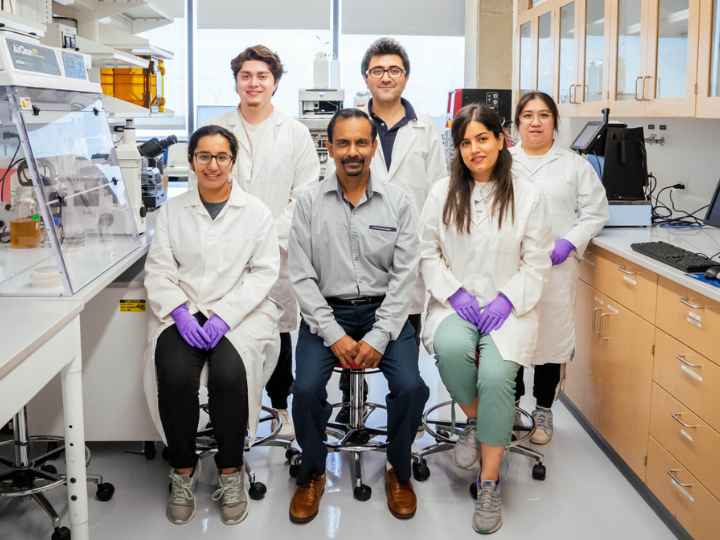Research Progresses Toward Achieving Goal of Net Zero Carbon Emissions
Scientists may be on the verge of taking a big step closer to the net-zero carbon emissions goal, thanks to University of Houston research into algae. Hidden potential is being revealed in the major algae studies at the microbial products lab, located at UH at Sugar Land.

The research project is detailed in a newly published article in Green Chemistry, a journal of the Royal Society of Chemistry.
Venkatesh Balan, associate professor of engineering technology in UH’s Cullen College of Engineering’s Division of Technology, is exploring surprising traits among small fresh- and salt-water phototropic (light-sensitive) organisms referred to as microalgae.
Microalgae can sequester carbon dioxide (CO2) from the atmosphere. But it is its ability, through a series of processes, to convert its captured CO2 into mass-produced proteins, lipids and carbohydrates that most interests Balan and his team of researchers.
“This green process goes beyond climate issues. For example, it may even transform the way we produce our food,” said Balan, who has been studying algae for seven years. His research evaluates the potential of using microalgae to treat wastewater and use algal biomass to produce food, fertilizers, fuels and chemicals. Algae grown in freshwater treatments, such as spirulina, is being used in health supplements and cosmetics. In the future, microalgae could be used as sustainable feed stock for producing biofuels and biochemicals that could lessen dependency on fossil fuels.
Microalgae’s most immediate superpower, however, is its potential to play a key role in the answer to the worldwide global warming.

“We are experiencing climate change. This summer’s 100-degree heat that lasted three months here in Texas, and in several other parts of the world, had never been seen before. That is a testament to climate change. No one can deny it,” Balan said.
The greenhouse effect – in which certain gases are blanketing Earth’s atmosphere, trapping heat closer to the planet – speeds up the warming. Greenhouse gases can comprise any gas that absorbs infrared radiation. In Earth’s atmosphere, CO2 and chlorofluorocarbon are the main factors.
“There is much interest among lawmakers and policymakers, even among companies that emit greenhouse gases, to find alternatives, especially for those emitted from industry,” Balan said.
But industry cannot be blamed for all the pollution problems that haunt us, he said. “On your table or in your pantry, you see food products. What’s harder to visualize are the greenhouse gasses emitted by the orchard that grows the fruit, the factory that makes the breakfast cereal, the transportation that brings the cookies to your neighborhood, even your own commute to buy the food. It adds up, but the problem is easy to ignore because we can’t see it. Yet all consumers contribute, in our own way, to the greenhouse effect.”

So, if CO2 and other chemicals are damaging our climate, how do we deal with the excess CO2 in our atmosphere? Until now, most of the scientific world has discussed capturing CO2 and burying it, possibly under an ocean or other large body of water, which is an expensive, energy intensive proposition.
“We are coming up with the alternate approach of using algae to fix the CO2 then using the carbon to make bioproducts that are useful to mankind,” Balan explained.
With research assistant Masha Alian, he recently discovered algae can be used as substrate to produce fungus, another useful tool in achieving net zero carbon footprint. The symbiotic relationship between algae and fungi can be found in lichen, which is a composite organism – part algae, part fungi. A common site in rural Texas and elsewhere, lichen (sometimes misnamed tree moss) is a preferred food of deer and other animals that nibble it from the trunks of trees where it grows in the wild.
In Balan’s lab, researchers are trying to mimic how lichen grows in nature. “The algae produce oxygen, and the fungi stabilizes CO2 and produces oxygen,” Balan explained. As a bonus, much of the food bed comprised of algae and fungus could be converted into healthy food products.

Balan is lead author of the article “Potential of Using Microalgae to Sequester CO2 and Processing to Bioproducts.” He is joined by coauthors: UH researchers James Pierson and Hasan Husain; Sandeep Kimar, Old Dominion University, Virginia; Christopher Saffron, Michigan State University; and Vinod Kumar, Cranfield University, U.K.


